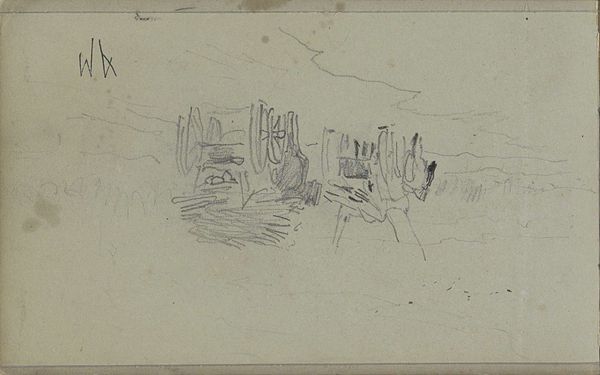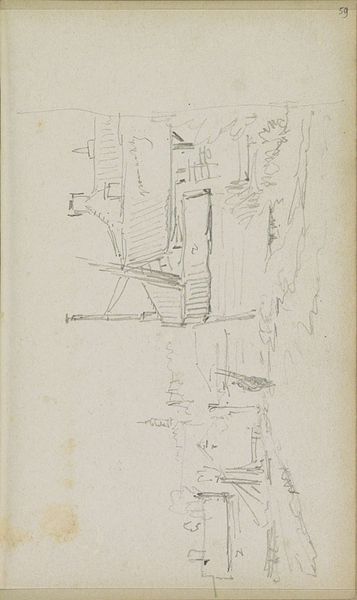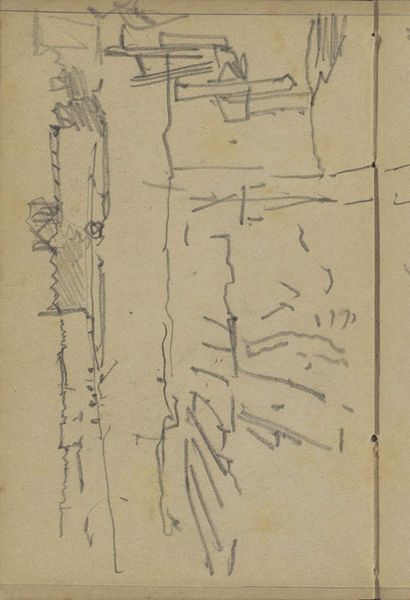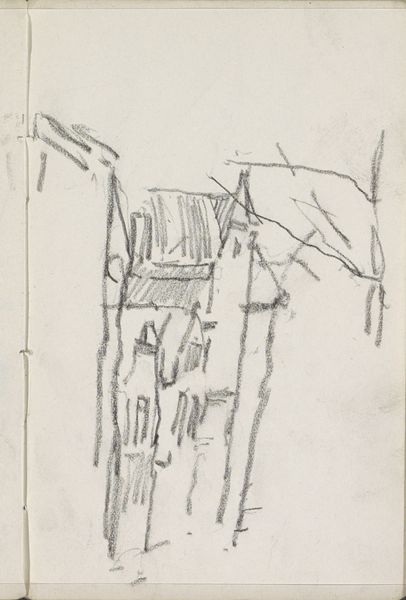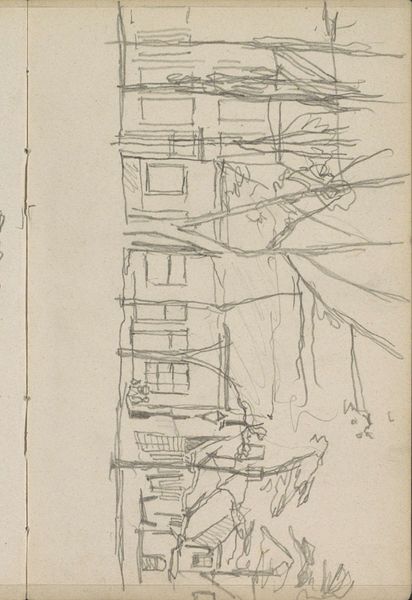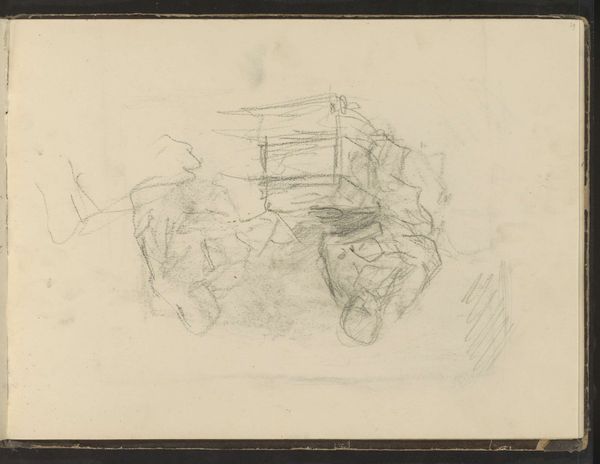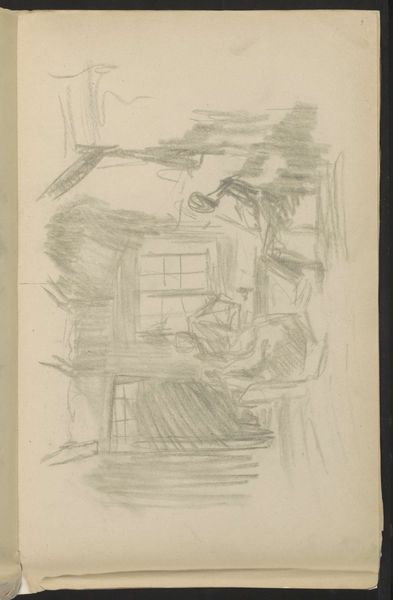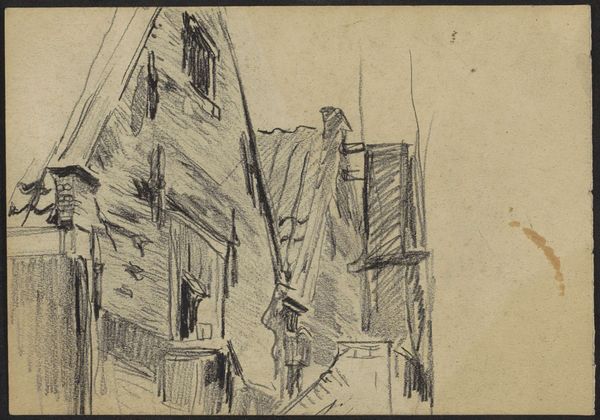
drawing, pencil
#
drawing
#
light pencil work
#
quirky sketch
#
dutch-golden-age
#
pen sketch
#
sketch book
#
personal sketchbook
#
ink drawing experimentation
#
sketch
#
pen-ink sketch
#
pencil
#
sketchbook drawing
#
cityscape
#
storyboard and sketchbook work
#
sketchbook art
#
realism
Dimensions: height 81 mm, width 133 mm
Copyright: Rijks Museum: Open Domain
Curator: Here at the Rijksmuseum, we have George Hendrik Breitner’s, "Figure on a Heavily Laden Cart," a drawing likely created between 1873 and 1923. It’s rendered in pencil. Editor: It gives off a raw, immediate feeling. The sketchiness almost hints at instability or the precariousness of the figure's situation. It's more than just a drawing; it feels like a loaded commentary. Curator: Precisely. Consider the historical context. Breitner was deeply attuned to the lives of working-class people in Amsterdam. The drawing likely reflects the heavy labor conditions and class struggle that many endured in that era. The cart itself becomes a symbol of that burden, not just in a physical sense but also in terms of social mobility and economic justice. It seems relevant still today. Editor: The material process reinforces that. Pencil as a medium is so direct, so unpretentious. It's immediate. You get a real sense of the artist grappling with depicting this everyday reality, the kind of back-breaking labor that fueled the Dutch economy but went largely unseen, unacknowledged. It’s less about romanticizing the worker and more about making their effort visible. Curator: I agree, and thinking intersectionally, we need to also consider how the subject's identity, perhaps marginalized in multiple ways, amplifies this loaded commentary. This scene serves as a critique of labor exploitation across axes of identity. How labor and identity become intertwined, reflecting a much bigger societal inequality, with a composition as heavy as the theme suggests. Editor: It really challenges the traditional view of art, where "high" art was disconnected from such daily toils. Breitner used his craft to depict the unvarnished truth, blurring lines between art and life, documenting material reality. By focusing on ordinary work, Breitner is immortalizing these physical struggles and social challenges. Curator: This work makes one think deeply about the burden of labor and inequitable distribution of resources. The image is both timeless and painfully relevant. Editor: Seeing how simply the materials represent a complex social struggle shows the potency of this method. Breitner's choices definitely amplify that reality, offering something really powerful to viewers even now.
Comments
No comments
Be the first to comment and join the conversation on the ultimate creative platform.

